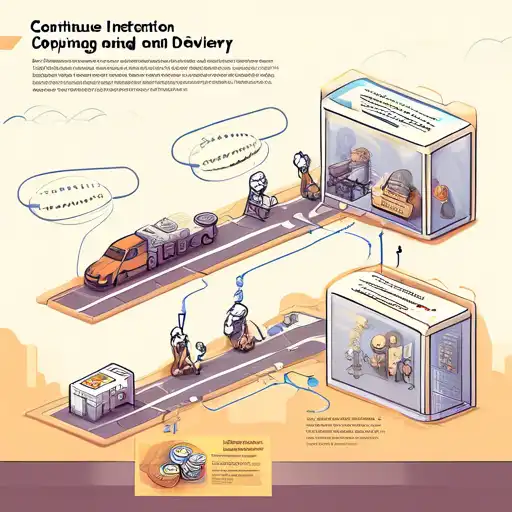What is Continuous Integration and Delivery?
Continuous Integration (CI) and Continuous Delivery (CD) are pivotal practices in modern software development, aimed at improving the speed and quality of software releases. CI/CD automates the integration of code changes from multiple contributors into a single software project, ensuring that the software can be reliably released at any time.
The Core Principles of CI/CD
At the heart of CI/CD are several core principles designed to streamline development processes:
- Automated Testing: Every change is automatically tested to detect issues early.
- Frequent Code Integration: Developers merge changes to the main branch several times a day.
- Deployment Automation: Software can be deployed to production at any time with the push of a button.
Benefits of Implementing CI/CD
Adopting CI/CD practices offers numerous advantages for development teams and organizations:
- Reduced Integration Problems: By integrating frequently, teams can avoid the integration hell that often plagues projects with longer integration cycles.
- Higher Quality Software: Automated testing ensures that bugs are caught and fixed early in the development cycle.
- Faster Release Rates: Automation speeds up the process from development to deployment, enabling faster delivery of features to users.
CI/CD Tools and Technologies
A variety of tools support CI/CD practices, each offering unique features to automate and manage the software delivery pipeline. Popular options include:
- Jenkins
- GitHub Actions
- CircleCI
- GitLab CI/CD
Choosing the right tool depends on your project's specific needs, team size, and existing infrastructure.
Best Practices for CI/CD Success
To maximize the benefits of CI/CD, teams should adhere to the following best practices:
- Maintain a Single Source Repository: All code should be stored in a version-controlled repository accessible to all team members.
- Automate the Build Process: The build process should be fully automated and triggered by every commit to the repository.
- Keep the Build Fast: A slow build process can hinder the CI/CD pipeline's efficiency. Optimize build times to maintain productivity.
Implementing CI/CD is a transformative step for any development team, enabling more agile responses to market demands and higher quality software products. By understanding and applying the principles and practices outlined above, teams can achieve significant improvements in their development workflows.
For more insights into optimizing your development process, explore our guide on Agile methodologies and how they complement CI/CD practices.
